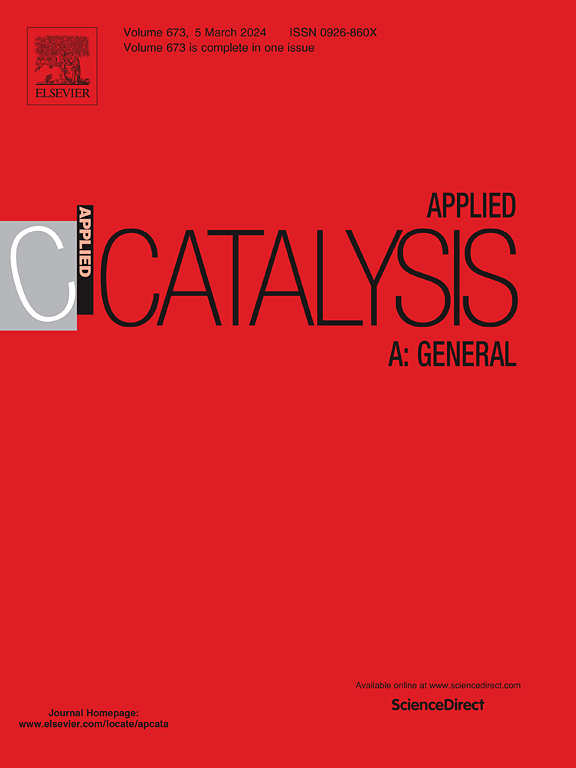粉煤灰废铝沸石的合成及其催化应用
IF 4.8
2区 化学
Q2 CHEMISTRY, PHYSICAL
引用次数: 0
摘要
以工业废渣粉煤灰为原料,采用水热法合成了一种经济高效、可持续发展的安钙分子筛。采用XRD、SEM、TGA、N2吸附解吸等温线、NH3-TPD、FT-IR等方法对合成材料进行了表征。对沸石催化乙酰丙酸与正丁醇酯化反应生成乙酰丙酸正丁酯的催化效率进行了评价。乙酰丙酸正丁酯是一种用于溶剂、增塑剂和生物燃料添加剂的有价值的化合物。优化后的催化剂FANAH-10Al表现出优异的性能,在中等条件下(12.5 wt%催化剂负载,117℃,4 h, LA与正丁醇摩尔比1:7),乙酰丙酸的转化率为97.6% %,乙酰丙酸正丁酯的收率为94.1% %。这些结果突出了cfa衍生沸石的高催化活性和效率,证明了它们作为生物质衍生化学合成的可持续催化剂的潜力。这项工作解决了在催化中利用cfa基沸石的差距,并建立了它们在工业应用中的可行性。本文章由计算机程序翻译,如有差异,请以英文原文为准。
Synthesis and catalytic applications of analcime zeolites derived from coal fly ash waste
This study presents the hydrothermal synthesis of analcime zeolite using coal fly ash (CFA), an industrial waste, as a cost-effective and sustainable raw material. The synthesized materials were characterized using XRD, SEM, TGA, N2 adsorption desorption isotherms, NH3-TPD, and FT-IR spectroscopy. The catalytic efficiency of the zeolites was evaluated in the esterification of levulinic acid with n-butanol to produce n-butyl levulinate, a valuable compound used in solvents, plasticizers, and biofuel additives. The optimized catalyst, FANAH-10Al, exhibited exceptional performance, achieving a 97.6 % conversion of levulinic acid and a 94.1 % yield of n-butyl levulinate under moderate conditions (12.5 wt% catalyst loading, 117 °C, 4 h, 1:7 LA to n-butyl alcohol mole ratio). These results highlight CFA-derived zeolites' high catalytic activity and efficiency, demonstrating their potential as sustainable catalysts for biomass-derived chemical synthesis. This work addresses the gap in utilizing CFA-based zeolites in catalysis and establishes their viability for industrial applications.
求助全文
通过发布文献求助,成功后即可免费获取论文全文。
去求助
来源期刊

Applied Catalysis A: General
化学-环境科学
CiteScore
9.00
自引率
5.50%
发文量
415
审稿时长
24 days
期刊介绍:
Applied Catalysis A: General publishes original papers on all aspects of catalysis of basic and practical interest to chemical scientists in both industrial and academic fields, with an emphasis onnew understanding of catalysts and catalytic reactions, new catalytic materials, new techniques, and new processes, especially those that have potential practical implications.
Papers that report results of a thorough study or optimization of systems or processes that are well understood, widely studied, or minor variations of known ones are discouraged. Authors should include statements in a separate section "Justification for Publication" of how the manuscript fits the scope of the journal in the cover letter to the editors. Submissions without such justification will be rejected without review.
 求助内容:
求助内容: 应助结果提醒方式:
应助结果提醒方式:


